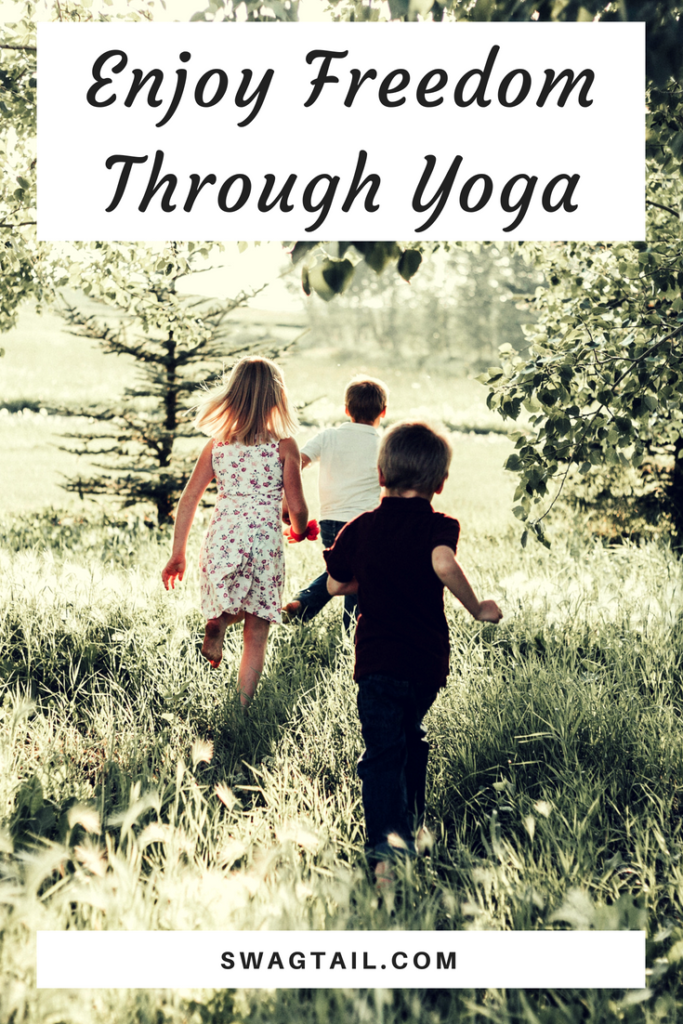 Freedom is one of the most sought-after experiences on Earth. And, for good reason! Freedom is accompanied by feelings of empowerment, growth, or even bliss. Much of the freedom we seek is the ability to simply be ourselves–open, honest, loving, and unique.
Freedom is one of the most sought-after experiences on Earth. And, for good reason! Freedom is accompanied by feelings of empowerment, growth, or even bliss. Much of the freedom we seek is the ability to simply be ourselves–open, honest, loving, and unique.
During my early teen years, I actually had a strong grasp on this. My dad passed away from brain cancer when I was 12 years old, and death somehow laid a spell on me. Daily, I thought about myself in relation to the infinite cosmos. This made me a whole lot more awkward, and quiet. I didn’t care about how I appeared to the outside world, or how I dressed. In fact, I wore an ankle-length floral skirt to the homecoming dance my freshman year when my schoolmates were wearing short, black dresses. Talk about out of touch!
But, this sole focus on my inner world was liberating. In The Four Agreements, by Don Miguel Ruiz, he explains how we can follow four simple steps to connect with this inner power at any age–and we don’t have to lose a loved one, to do it.
Photo Credit: Priscilla Du Preez
WHAT IS FREEDOM?
Many people think of freedom as the ability to do what they want to, when they want to. But what about the freedom to simply be who they are, without any social masks or expectations. When we don’t feel we are free to be ourselves, we want to blame the government, the weather, our family upbringing, or even God. It takes courage to look within ourselves to think that the only limiting factor to our freedom is ourselves. For, it’s really the limiting beliefs of our past that define our experiences today.
Moksha, which means freedom in Sanskrit, is liberation from the mind and the beliefs held in it. Instead, it’s consciousness of–and connection to–all existence. Joy, peace, and bliss are just a few emotions that describe such freedom.
WHY DO WE WANT IT?
- Removal of suffering, bondage and limitation
- Connection with the infinite aspects of ourselves
- Confidence in our individuality and unique ways of self-expression
- Increased bonding with other human beings
- Improved health
- And much more!
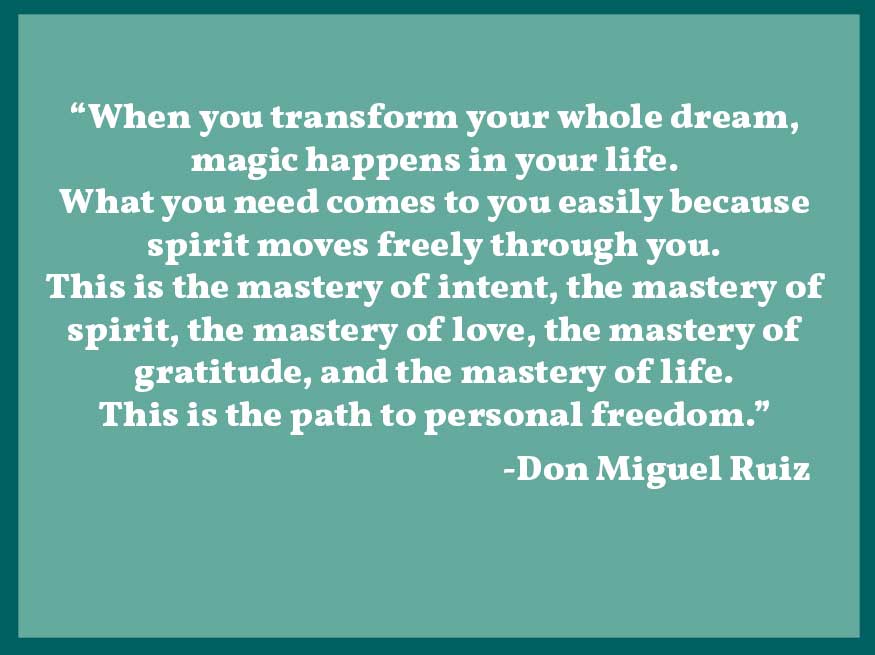
HOW TO WE ATTAIN FREEDOM?
We attain freedom, and regain our incredible power, by replacing old, fear-based agreements that cause suffering with new ones that are liberating. In addition to finding freedom through yoga, this can also be done by adopting the four agreements that Ruiz lays out in his book. Living these principles may sound simple, but they take practice (just like learning any new yoga pose on the mat). Start small, and celebrate victories when old beliefs are removed. In time, you can live with a mind and heart that is connected to the love, power, and freedom you had when you were born.
Speak in alignment with your greatness (or say nothing)
This is what Ruiz calls “being impeccable with your word.” This is important because words have the power to uplift ourselves and others. Or, words can tear them down. Can you think of a time when you felt entirely confident in who you are? That equanimity and poise is evidence of your personal integrity.
When you are in alignment, you understand your greatness and your unbelievable capacity for love. From this place, you speak kind and loving words. You know your worth, and do not blame or judge. And, since we are human and unable to stay permanently in that place of connection, refrain from using words that speak against yourself or others. It’s like my mom always said, “if you can’t say anything nice, don’t say anything at all.”
Trust your own greatness (regardless of the opinion of others)
When you know who you are (as an amazingly incredible, unique being), the opinions of others do not matter. There is no need to be accepted or approved. Any words of praise only confirm what you already knew, and any words of criticism are ignored. Plus, any words offered by others only reflect their beliefs and view of the world–they have nothing to do with you. Thus, the second agreement by Ruiz, which is “don’t take anything personally,” reminds you to stay focused on who you are, and where you’re going. Any input from others can just slow you down, or cause unnecessary suffering.
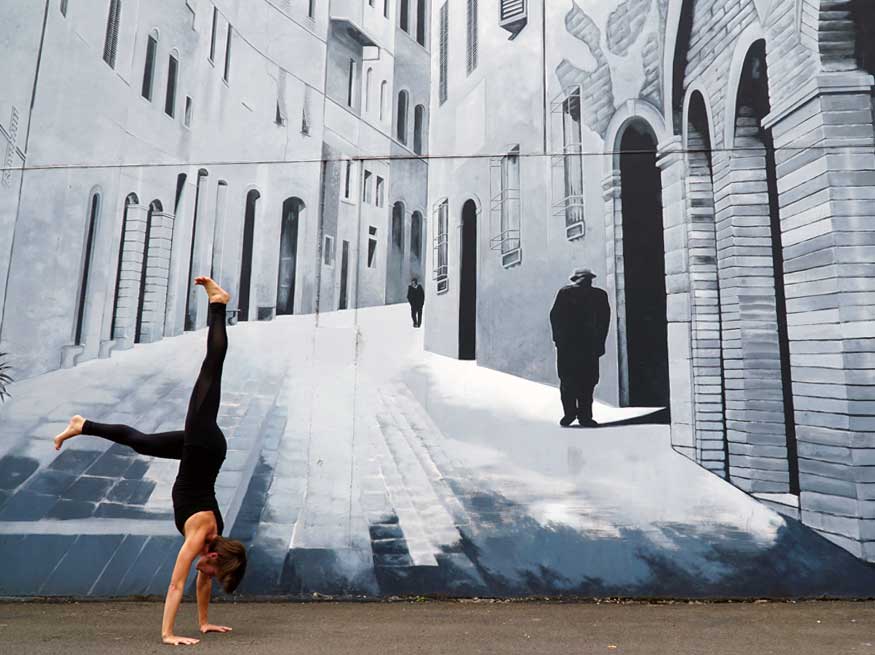
Have the courage to ask questions (lots and lots of questions)
The third agreement is “don’t make assumptions.” With the mind’s incessant need to understand life, and feel safe, we make assumptions. When we assume to know what other people are thinking or doing, the poison of misunderstanding infuses our relationships. This can lead to the need to defend our position, and a whole lot of unwanted drama. The antidote? Ask lots and lots of questions. This will create honest and clear communication. This is something we value highly here at Swagtail, which is why there are numerous posts on the topic, such as 10 questions to hire the best yoga instructors and top questions to shine at your yoga interview. Honor your voice, and your greatness, with the right to ask.
Always do your best (even though it changes continually)
You are alive, and all things alive constantly change. Thus, the best that you have to offer will vary depending on your mental focus, your health, your emotional mood, and even the time of day. When you commit to doing your best–no matter what–you are practicing self-transformation. And, you’re taking the practical steps to ensure the best you experience today is far better than it was in the past. Doing your best also helps you integrate the habits of the other three agreements, as there will likely be times you say something hurtful, or believe the mean words of someone else, or even assume you know the thoughts of a loved one. Just do your best each moment..
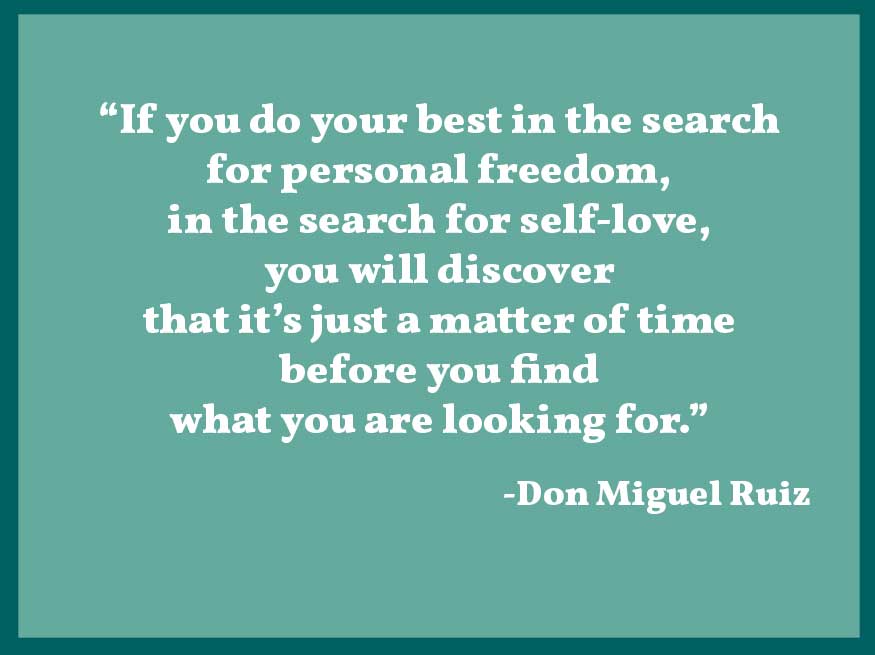
THE FOUR AGREEMENTS ON THE YOGA MAT
Much of what Ruiz speaks of in his book are often applied on the yoga mat, and many times just assumed as a natural part of the practice. Here are some important and achievable ways to enjoy freedom through yoga.
Attention:
This is our capacity to hold any piece of information at the foreground of our mind, despite millions and millions of other distractions that could catch our gaze. If old beliefs are just where we put our attention, and made agreements, we can make internal changes each time we purposefully shift that attention. We have the power to make new agreements. View yourself as strong, instead of weak. Embrace your learning, instead of being stuck. You can change the rules of the world in which you want to live, instead of feeling like others rule your existence.
Be the Warrior:
In shamanic traditions, people refer to themselves as warriors because they battle the fear, doubt, and false beliefs of the mind. When taking this pose, students embody more than a shape. The warrior has the courage to stand up for what is right. They have the rebellious fortitude to fight back irrational fear or negative emotional poison. Warriors have the discipline to manage their energy wisely, and they have the control of their emotions to express them in the right place and the right time.
Be the Child:
Balansana is a pose offered as a way to rest, or reflect, or bring balance to the body. It’s a calm pose relative to others taken in class, and seems oddly contradictory to the busy-bodies of active kids (unless they’re sleeping, that is). If you have children, or are around them at all, you notice that they’re vibrantly alive. They are wild and carefree. The freedom we are seeking as adults returns us to a similar place. Child’s pose reminds us to return to a light playfulness away from the left-brained logical thinking that too often dictates our daily lives. Yet, instead of being innocent like newbies on the planet, we now can navigate our minds and run our lives with a seasoned wisdom.
Breathe Deeply:
The most essential need of humans is to breathe. For, if you’re not doing this, you’re dead! In yoga, we teach students to establish deep breathing patterns that will support the physical demands of their practice. But, on a far more basic level, we’re reminding them to feel the infinite support of the prana, or life force, around them. And, we’re facilitating a way in which they can connect with the pleasure and freedom that comes from that breath.
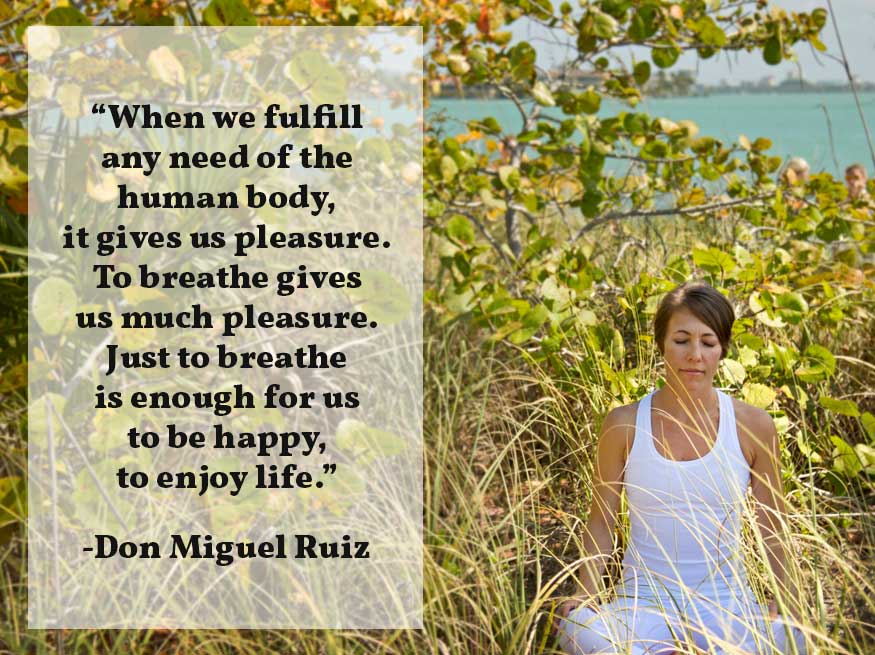
At the start of class, have your students lie on their backs and invite them to place their hands on their lungs. Let them spread their fingers wide, palms soft. Have them keep their elbows resting on the floor for support. Allow them the freedom to feel the breath move in the body. Notice the floor as a stable support from which to enjoy the breath. Remind them to enjoy the freedom that comes from simply breathing there in stillness.
PUTTING IT TOGETHER
Freedom is your natural birthright and the essence of your beingness. The Four Agreements are a pathway to experience it. Yoga, too, is a way to tap into the bliss, peace, and confidence that comes with it. On this Memorial weekend, we are also celebrating those who have taken action to help us actively enjoy freedom on a daily basis. A big thank you to you all!


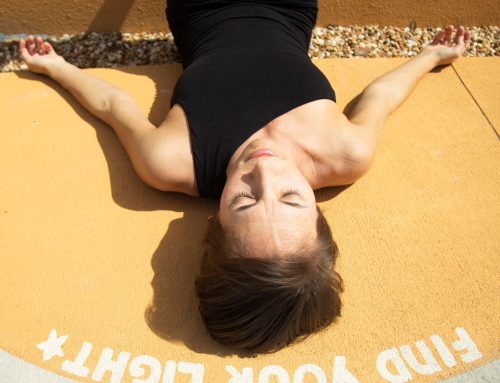

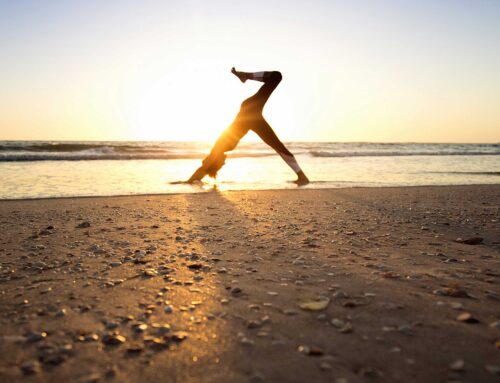
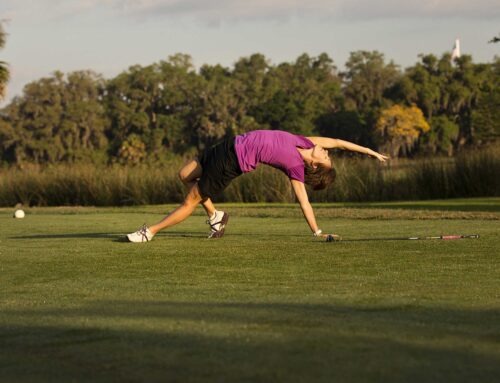
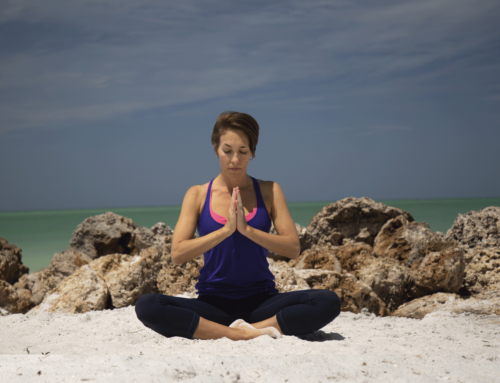
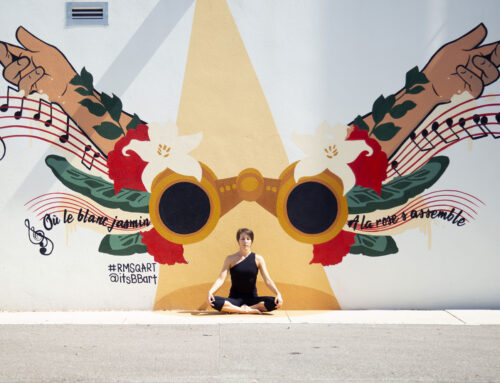
Leave A Comment